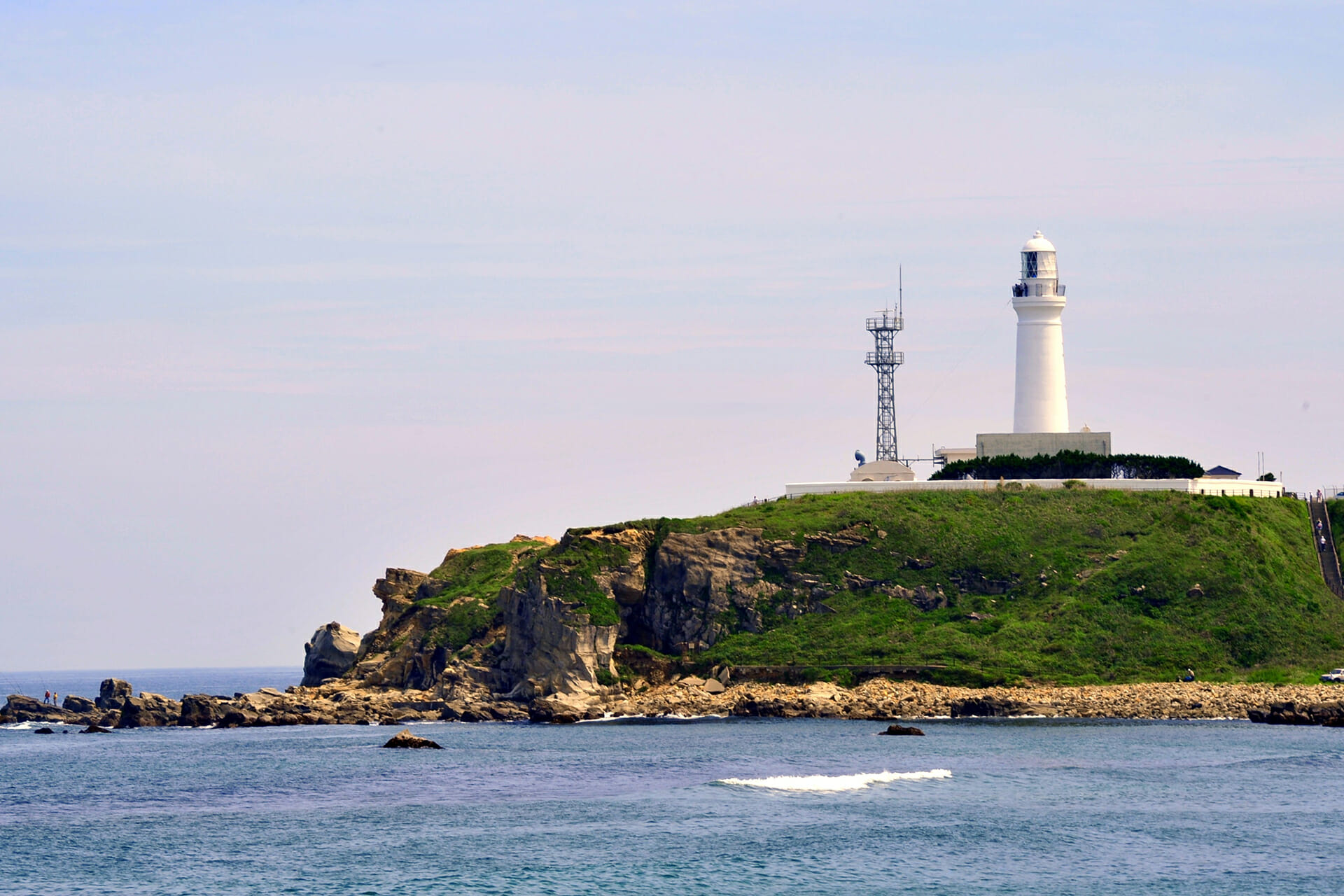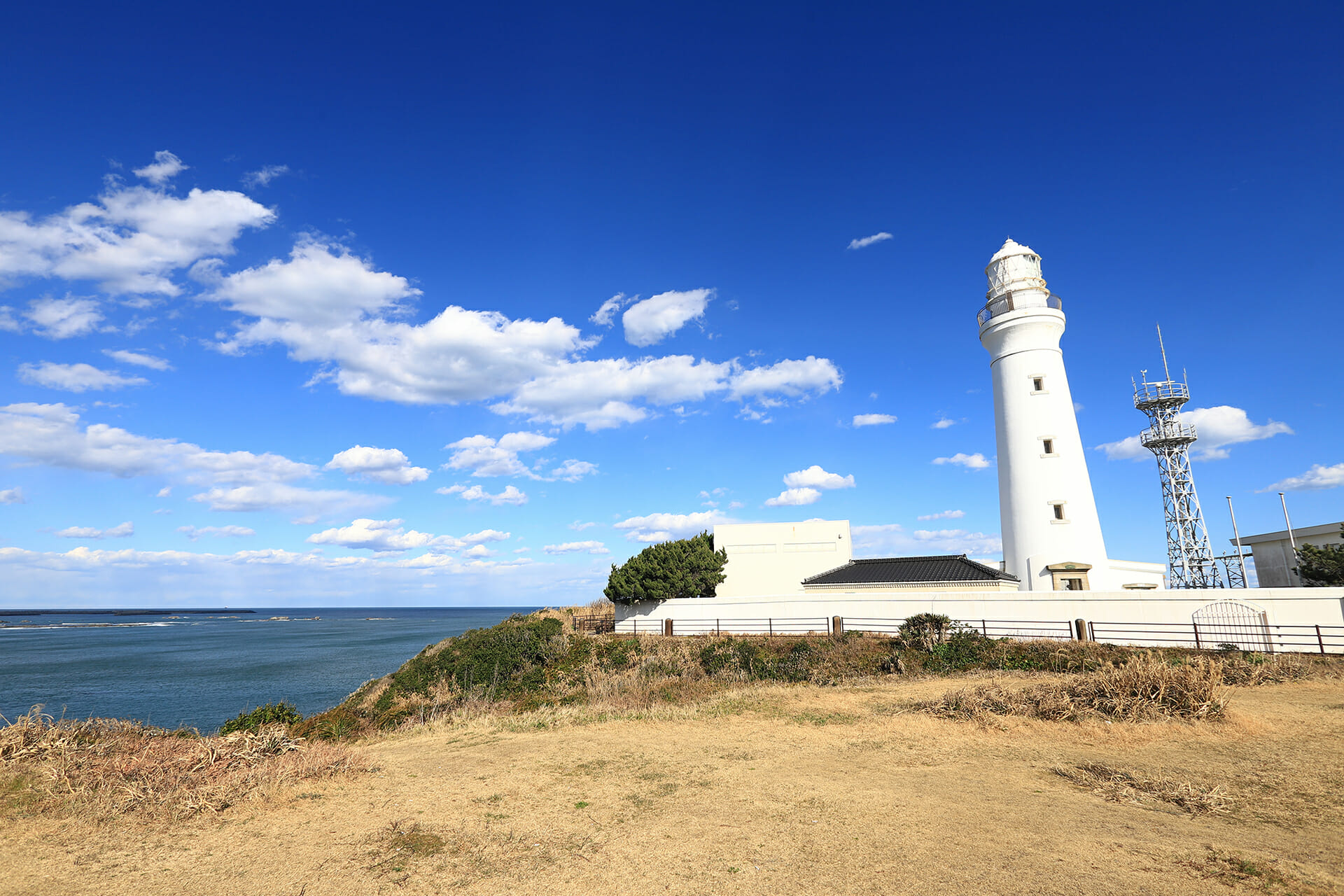
Things to Do | Visit Chiba | Latest update:2023/03/30
Chiba Prefecture occupies the Boso Peninsula, which is situated between Tokyo Bay and the Pacific Ocean. Chiba’s coastline is dotted with lighthouses that have historically served to help navigate the ships that traverse the maritime routes along Japan’s eastern shores. A visit to any of these lighthouses is a great day-trip idea if you’re looking to enjoy some of the best ocean views that Chiba has to offer. Five of Chiba’s more famous lighthouses are: Inubosaki Lighthouse (Choshi City), Iioka Lighthouse (Asahi City), Taitosaki Lighthouse (Isumi City), Nojimasaki Lighthouse (Minamiboso City), and Sunosaki Lighthouse (Tateyama City).

Inubosaki Lighthouse (Choshi City) was constructed in 1874 by English architect Richard Henry Brunton, and is ranked on the IALA’s list of 100 lighthouses in the world that are historic and architectural monuments. At a height of 31.57 meters, it is the second tallest brick building currently standing in Japan. Climb the 99 steps of the corkscrew staircase for a panoramic view of the cape jutting out into the ocean. The “INUBOW TERASU TERRACE” market next to the lighthouse is a great place to stop for a meal and pick up some souvenirs.

Iioka Lighthouse (Asahi City) stands above the sea on top of the 60-meter high Byobugaura cliffs, a coastline often referred to as “The Dover of the East.” This vantage point makes the lighthouse grounds a perfect spot to enjoy magnificent ocean views. There is also an observatory where you can look out over the ports and coastal plains of Asahi City. Stick around for the sunset too, as this location was chosen as having one of the top 100 sunsets in Japan.

Taitosaki Lighthouse (Isumi City) sits atop the 60-meter ocean cliffs of Cape Taito, located just beside the southern edge of Chiba’s Kujukuri coast. The lighthouse grounds extend to the edge of the cliffs, offering a look straight out over the ocean, as well as views of the local beaches, surf spots, and beyond toward the rugged coastline of southern Chiba.

Nojimasaki Lighthouse (Minamiboso City) is located within the grounds of the historic Shirahama Nojimasaki Park, the southern-most point of the Boso Peninsula, and an area once known as a gathering place for inspiration-seeking writers and artists. Nojimasaki Lighthouse is known as one of the original lighthouses of Japan, with its roots dating back to a treaty with the U.S., the U.K., France, and the Netherlands in 1866. In addition to a climb to the top of the lighthouse, enjoy the park’s scenic walking paths and shrines, and the Shirahama Marine Art Museum.

Sunosaki Lighthouse (Tateyama City) is a registered “Tangible Cultural Property” of Japan, and serves as Chiba’s guiding light for ships making their way into Tokyo Bay. On clear days, visitors here are also treated with a chance to see Mt. Fuji and the Miura Peninsula on the other side of Tokyo Bay. If you’re looking to spend a night down by the sea, the lighthouse is conveniently located next to the luxurious Hotel Sunosaki Kazenosho: visitchiba.jp/things/hotel-sunosaki-kazenosho/
9576 Inubosaki, Choshi City
(About a ten-minute walk from Inubo Station on the Choshi Electric Railway.)
1309-1 Kaminagai, Asahi City
(・From Asahi Station or Iioka Station on the JR Sobu Main Line, take the “Community Bus” and get off at the “Iioka Todai” bus stop. The lighthouse is one minute on foot from the bus stop.
・From Asahi Station on the JR Sobu Main Line, take the bus bound for Futaba-cho and get off at Todai Iriguchi Bus Stop (approx. 30-min bus ride). The lighthouse is ten minutes on foot from the bus stop.)
Izumi, Misaki-cho, Isumi City
(About a 50-minute walk from JR Taito Station.)
630 Shirahama, Shirahama-cho, Minamiboso City
(From JR Tateyama Station, take the bus bound for "Awa Shirahama" to the Nojimasaki Todai Guchi bus stop, then walk for about 8 minutes.)
+81-470-38-3231
1043 Sunosaki, Tateyama City
(From JR Tateyama Station, take the bus bound for Nanbo Paradise and get off at Sunosaki Todai-Mae Bus Stop (approx. 35-min bus ride).)
+81-470-22-2000(Tateyama City Tourist Information Office)